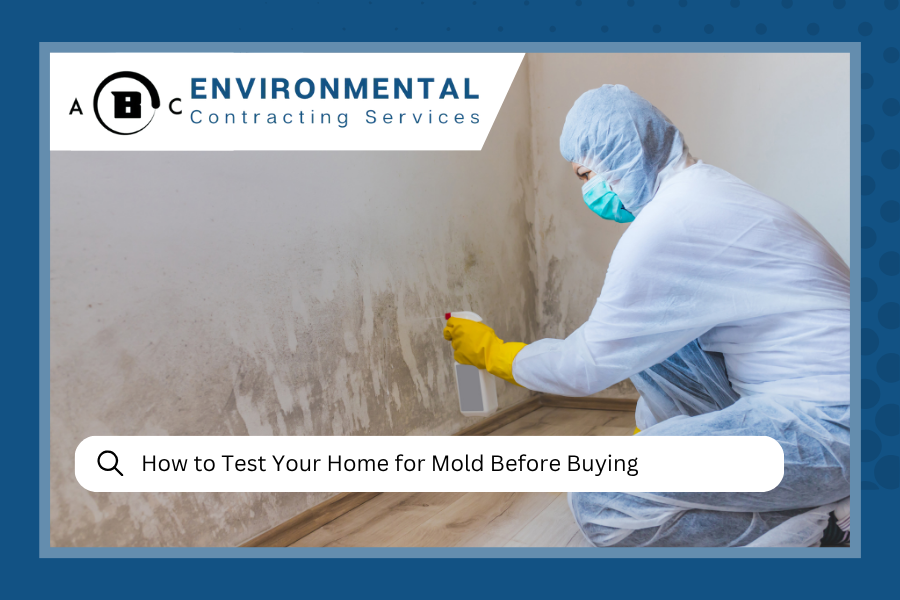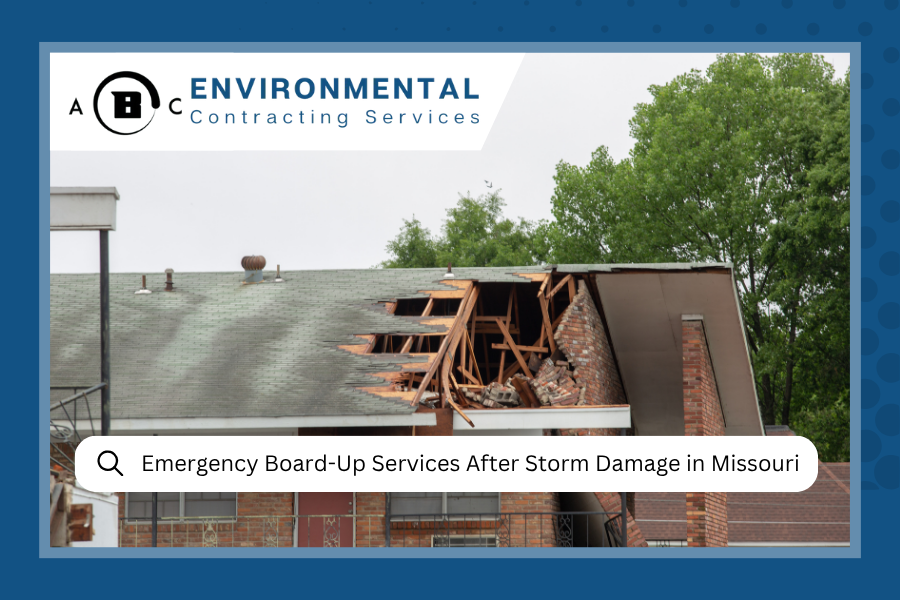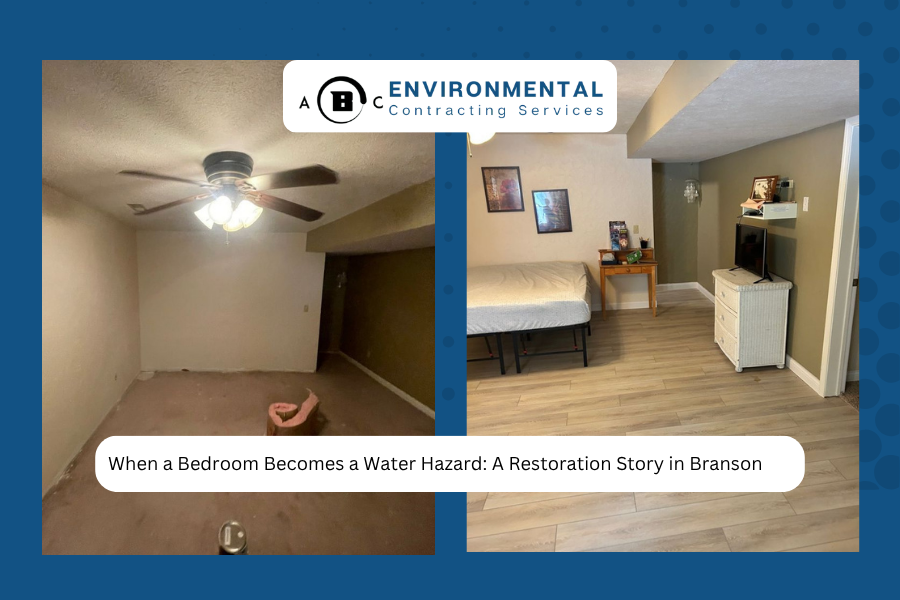Jump to Section:
- Why Mold Testing Matters When Buying a Home
- Where Mold Likes to Hide in Homes
- How to Test Your Home for Mold
- Red Flags That Should Make You Think Twice
- What to Do If You Find Mold
- Understanding the Connection Between Water Damage and Mold
- Why Professional Mold Testing Is Worth It
- Frequently Asked Questions
Buying a home is exciting, but it can also be nerve wracking. You're making one of the biggest investments of your life, and the last thing you want is to discover hidden problems after closing. One issue that often flies under the radar? Mold. It's not always visible, it doesn't always smell, and by the time you notice it, it may have already caused serious damage. At ABC Environmental Contracting Services in Springfield, we've seen firsthand how important mold testing and inspection can be during the home buying process. Knowing what to look for can save you thousands of dollars and a lot of stress down the road.
Why Mold Testing Matters When Buying a Home
Let's be honest, nobody wants to think about mold when they're picturing themselves in a new home. But here's the thing: mold is sneaky. It loves moisture, darkness, and spaces where air doesn't circulate well. Basements, crawl spaces, attics, and even behind walls can harbor mold without you ever seeing it. And in Missouri's humid climate, especially in the Ozarks region, conditions are often just right for mold to thrive.
Mold isn't just a cosmetic problem. Some types can trigger allergies, respiratory issues, and other health concerns. Plus, if a home has a mold problem, it usually means there's a moisture problem, and that can lead to structural damage over time. Testing for mold before you buy gives you leverage to negotiate repairs, ask for a price reduction, or in some cases, walk away from a bad deal.
Where Mold Likes to Hide in Homes
Mold doesn't announce itself with a welcome sign. It hides in the places you're least likely to check during a casual walkthrough. Here are the most common spots where mold sets up camp:
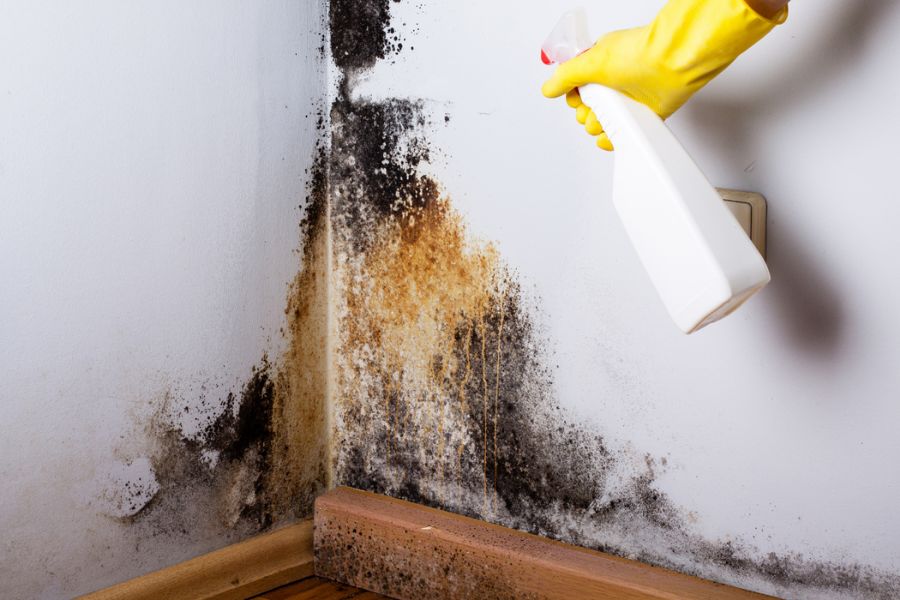
Mold often appears as dark patches on walls and ceilings, especially in areas with poor ventilation or past water damage.
Basements and Crawl Spaces
These areas are naturally damp, especially in older homes. Poor ventilation, foundation cracks, or previous water damage can create the perfect environment for mold. If the home has a sump pump or shows signs of past flooding, pay extra attention.
Attics and Roof Spaces
Roof leaks are a common culprit. Even a small leak that drips occasionally can lead to mold growth in insulation, wood beams, or drywall. Look for water stains, discoloration, or a musty smell.
Bathrooms and Kitchens
Anywhere water is used regularly is a potential mold hotspot. Check around sinks, under cabinets, behind toilets, and near appliances like dishwashers and refrigerators.
HVAC Systems
Mold can grow inside ductwork and air conditioning units, then spread spores throughout the house every time the system runs. If the home smells musty when the AC kicks on, that's a red flag.
Need Help After Discovering Water Damage?
Don't wait for mold to develop. Our team offers fast, professional water damage restoration to protect your home and prevent future mold growth.
Learn About Water Damage RestorationHow to Test Your Home for Mold: A Step by Step Checklist
Testing for mold doesn't have to be overwhelming. Here's a practical checklist to follow during your home inspection:
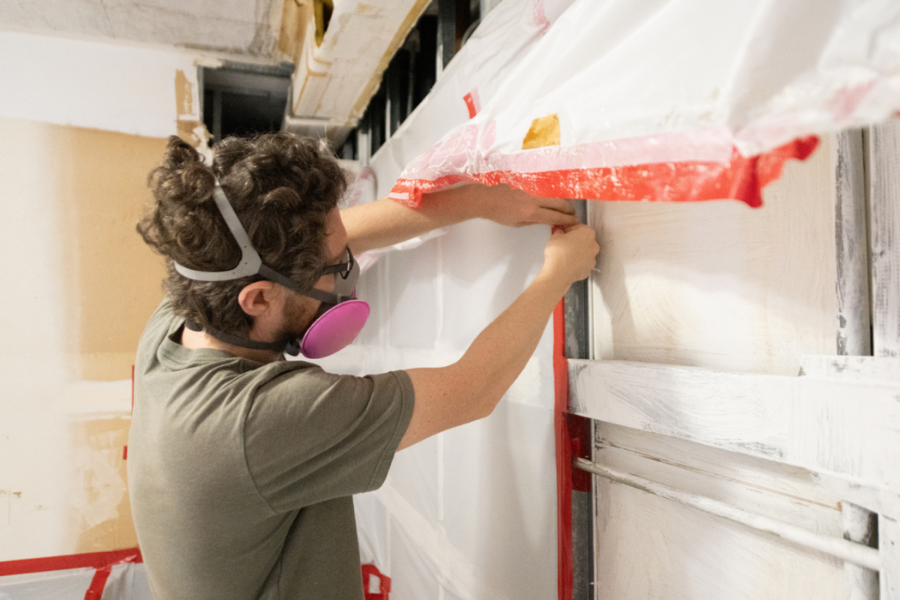
A professional mold inspector uses specialized equipment to detect hidden mold that isn't visible during a standard walkthrough.
Your 5-Step Mold Testing Checklist
Do a Visual Inspection
Walk through every room with a flashlight. Look for black, green, or white patches on walls, ceilings, or floors, peeling paint or bubbling wallpaper, water stains or discoloration, and warped flooring or soft spots in drywall. Don't forget to check closets, under sinks, and inside cabinets.
Use Your Nose
Mold often has a distinct musty or earthy smell. If a room smells off, especially in enclosed spaces, there's a good chance mold is present even if you can't see it.
Check for Moisture
Grab a moisture meter if you can. These handy tools measure the moisture content in walls, floors, and ceilings. High readings indicate potential mold growth or water intrusion.
Hire a Professional Mold Inspector
If you spot any warning signs or the home has a history of water damage, bring in a professional. They'll use specialized equipment like infrared cameras and air quality tests to detect mold that's hidden from view.
Request Lab Testing
For a more detailed analysis, consider lab testing. A professional will collect air samples or surface swabs and send them to a lab to identify the type and concentration of mold present.
Red Flags That Should Make You Think Twice
Some warning signs go beyond just mold. They point to bigger issues with the property:
- Recent Cosmetic Updates: Fresh paint or new flooring in isolated areas might be covering up mold or water damage.
- Strong Air Fresheners: If the home smells like a perfume factory, the seller might be masking odors.
- Visible Water Damage: Stains on ceilings or walls, even if they're old, suggest a history of leaks.
- Poor Ventilation: Homes without proper airflow in bathrooms, kitchens, or basements are more prone to mold.
- Humidity Issues: Condensation on windows or a damp feeling in the air can signal excess moisture.

Windows with condensation and visible mold growth indicate poor ventilation and excess moisture in the home.
If the home had storm related water damage in the past, it's worth digging deeper into the repairs that were made.
What to Do If You Find Mold
Finding mold during a home inspection doesn't automatically mean you should walk away. It does mean you need to take action. Here's what we recommend:
Negotiate Repairs: Ask the seller to remediate the mold before closing. Get documentation from a licensed contractor showing the work was done properly.
Request a Price Reduction: If the seller won't fix the mold, negotiate a lower purchase price so you can handle the remediation yourself.
Get a Second Opinion: If the inspection reveals significant mold, bring in a specialist to assess the full extent of the problem and provide a cost estimate.
Consider Walking Away: If the mold is extensive and the seller isn't willing to address it, it might be best to move on to another property.
Understanding how water damage can lead to mold helps you make informed decisions about the home's long term condition.
| Testing Method | Cost Range | Time Required | Best For |
|---|---|---|---|
| DIY Visual Inspection | Free | 1-2 hours | Initial assessment, obvious mold |
| DIY Test Kit | $10-$50 | 3-5 days (with lab results) | Quick screening, surface testing |
| Professional Inspection | $300-$600 | 2-4 hours | Hidden mold, comprehensive assessment |
| Professional with Lab Testing | $600-$1,000+ | 3-5 days (with lab results) | Identifying mold species, air quality analysis |
Understanding the Connection Between Water Damage and Mold
Mold doesn't just appear out of nowhere. It needs moisture to grow, and that moisture usually comes from water damage. Whether it's a leaky roof, a burst pipe, poor drainage around the foundation, or even high humidity, water is the root cause of most mold problems.
That's why it's so important to look for signs of past or current water issues when you're buying a home. Even if mold has been cleaned up, if the underlying water problem wasn't fixed, the mold will come back. According to the Environmental Protection Agency , controlling moisture is the key to preventing mold growth.
Why Professional Mold Testing Is Worth It
You might be tempted to skip professional testing and just do a visual check yourself. And hey, that's a good start. But here's the reality: mold can hide in places you can't see without the right tools. A professional inspector knows where to look and how to test for hidden mold. They can spot problems that might not show up until after you've moved in.
Plus, if you ever need to file an insurance claim or resell the home, having professional documentation of the mold situation is invaluable. It shows you did your due diligence. Ready to schedule a pre-purchase inspection?
Get Your Mold Inspection Today
Final Thoughts
Buying a home is one of the biggest decisions you'll make, and mold testing should be a non negotiable part of your due diligence. Yes, it costs a bit upfront, but it's nothing compared to what you'd pay to fix a major mold problem after closing. Take the time to inspect thoroughly, hire professionals when needed, and don't be afraid to negotiate or walk away if something doesn't feel right. Your future self will thank you.
Frequently Asked Questions About Testing for Mold Before Buying
Should I include mold testing in my home inspection contingency?
Absolutely. Including mold testing as part of your inspection contingency gives you the legal right to back out of the purchase or negotiate repairs if significant mold is discovered. Make sure your purchase agreement specifically mentions mold inspection so you're protected during the due diligence period. Most sellers expect this in areas prone to humidity like the Ozarks.
What happens if mold is found after I've already bought the house?
If mold appears after closing and wasn't disclosed by the seller, you may have legal recourse depending on your state's disclosure laws. However, proving the seller knew about the mold can be difficult. This is exactly why pre purchase testing is so important. It protects you from inheriting someone else's hidden problem and gives you documentation to hold sellers accountable.
Can a seller refuse to let me test for mold before buying?
Technically, yes. A seller can refuse testing, but that's a major red flag. If a seller won't allow reasonable inspections, including mold testing, you should seriously reconsider the purchase. Legitimate sellers have nothing to hide and understand that buyers need to protect their investment. A refusal often means they know there's a problem.
How long does professional mold testing take during the home buying process?
Most professional mold inspections take 2 to 4 hours depending on the size of the home and the complexity of the testing. If lab analysis is required, you'll typically receive results within 3 to 5 business days. Plan for this timeline when scheduling your inspections so you don't delay your closing date or miss your contingency deadlines.

